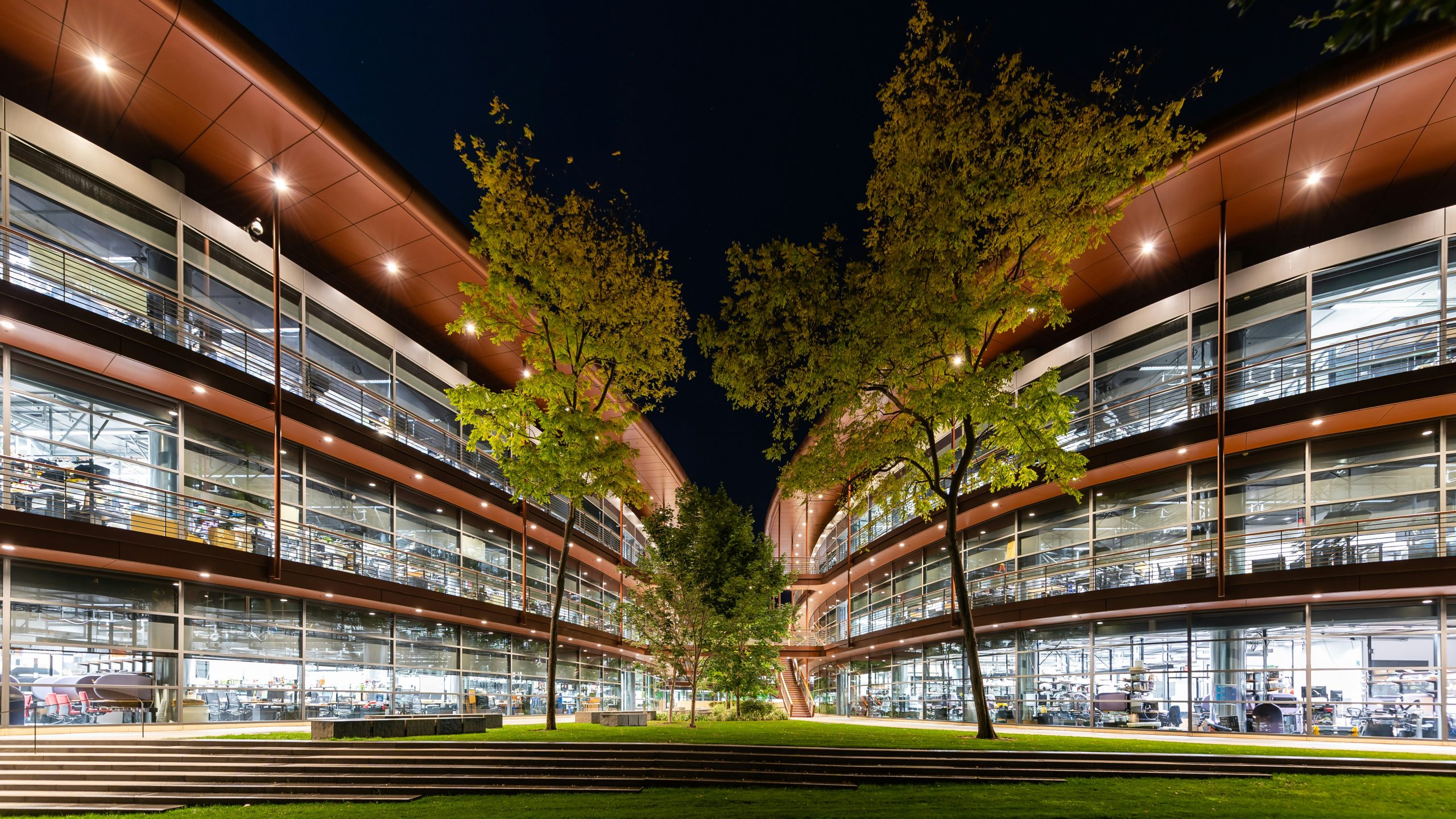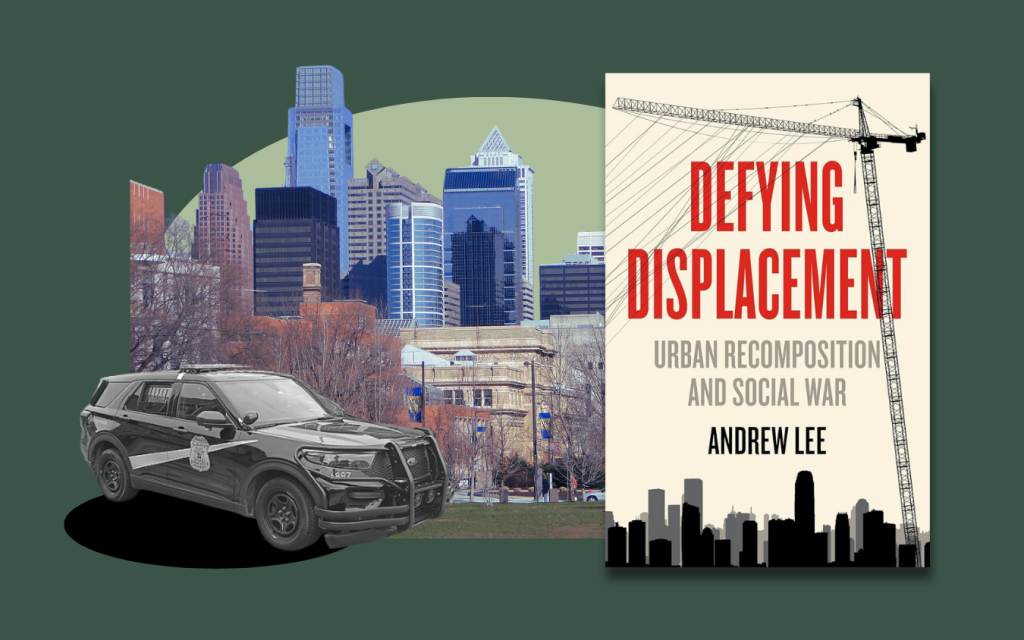The following is an excerpt adapted from Defying Displacement: Urban Recomposition and Social War (IAS/AK Press, 2024).
Universities as gentrifiers
“These super-men and world-mastering demi-gods listened, however, to no low tongues of ours, even when we pointed silently to their feet of clay.” —W.E.B. Du Bois
The workers and capitalists who profit most from the gentrification economy are often blessed by familial wealth and almost always with advanced degrees. College-educated workers received a full 97% of “good jobs” created after the Great Recession as the labor market polarized between low-paying jobs and those requiring post-secondary education. If it is highly-educated workers who are the crux of production in the wealthy imperial core, and if achieving such jobs is necessary for workers to achieve not only luxury but a minimally dignified life, it is no wonder that the gentrification economy increases the power and influence of organizations such as the Silicon Valley’s largest landowner: not Apple, Amazon, or Google, but Stanford University.

Not only Silicon Valley’s largest owner of both commercial land and single-family homes, Stanford University controls a domain including a research park, a shopping mall, a hospital, and professor housing. 61% of the university’s 8,180 acres are undeveloped entirely, a green oasis of wealth amid a housing crisis.
“People think of Stanford as a university with a football team and two basketball teams, I guess,” explains Lenny Seigal, former mayor of neighboring Mountain View. “But it’s a corporation with enormous land ownership, and it functions in its relationship to the surrounding communities as a corporation.”
And an enormously successful corporation, at that. With a $37.8 billion endowment in 2021, the university has invested billions in income-generating properties. Though it received its land holdings from its founder, robber baron Leland Stanford, the university reaps enormous wealth from a long enmeshment with the tech industry. The relationship dates back to 1937, when two Stanford students founded Hewlett-Packard. Millionaire faculty members invest in students’ startups. Venture capitalists teach classes. When graduates—whose median family income is $167,500 to begin with—donate the proceeds of high-paying tech jobs to their alma mater, the endowment grows.
But alumni generosity isn’t the only benefit Stanford gets from the industry. The Office of Technology Licensing asserts ownership rights over technology developed at Stanford. Companies like Google, Yahoo, Netflix, VMWare, and Sun Microsystems were all started by Stanford affiliates or using Stanford technology. Cisco’s first router was based on the Stanford University computer network. The Office of Technology Licensing received $336 million when it sold its Google stock in 2005. As of 2012, the office had netted Stanford $1.3 billion in royalty payments.
Classes and class
For the privileged children of the Valley, pressure to secure an elite institution’s diploma is immense. Parents pad out their children’s resumes by dropping thousands of dollars to send them on charitable service trips to Mongolia. Palo Alto paid over a million dollars to install sensors along the commuter rail line to detect attempted suicides when admissions decisions roll in. The city’s high school students kill themselves at several times the national rate.
“We are not teenagers. We are lifeless bodies in a system that breeds competition [and] hatred,” wrote one Palo Alto High School student in an op-ed entitled “The Sorrows of Young Palo Altans.” “If you’re not into [science, tech, engineering, and math],” said another, “you feel that you are not going to succeed.” The horror that pushes teenagers onto the CalTrain tracks is not of being a worker instead of an owner. It is of falling from the circle of workers who do well in the new economy into those who do not, from able to gentrify to those only ever displaced.
When universities expand campuses to attract more elite students, they become not only the facilitators and beneficiaries of gentrification, but its agents as well. In Orlando, a $1 billion, 68-acre mixed-use development around UCF Valencia called the Creative Village caused housing prices to double before construction even began. Wayne State University’s private police force enforces security across the gentrified core of post-industrial Detroit. In Philadelphia’s so-called University City, historically the Black Bottom, university development has caused housing prices to more than double and the Black population to be cut in half. Universities are now the largest employers in most large cities in the US. “The department store is closed, the newspaper is bankrupt, the local bank is no longer local, and the manufacturing is gone,” says Lewis & Clark College president Wim Wiewel. The universities endure, and they have “enthusiastically seized more economic and urban development responsibilities.”
On violence
And though the right wing claims that colleges are laboratories for the identification of fictitious violence where hoodwinked undergraduates are indoctrinated into believing in the false danger of stereotypes and of slurs, the actual violence of university-facilitated displacement gets scant mention in lecture halls. There are no mandatory freshman courses on the people the new dorm building forced out. Breitbart is not writing outraged screeds about how some mistreated child was “called out” for their techie parents.
Some of the most pernicious and pervasive forms of violence are those not acknowledged as violence at all. Displacement is called rejuvenation, development, revitalization—all biological terms. Such language allows gentrification’s proponents to portray themselves as agents of an inevitable natural force, not the instigators of mass dispossession by force, and to react with feigned horror when communal banishment is resisted by force, as well.
All things being equal, people generally find the preservation and self-determination of community and home preferable to the opposite. To convince someone of the futility of such a preference requires an ideological infrastructure of considerable sophistication.
It also requires a certain quantity of loaded guns.
Andrew Lee is the author of Defying Displacement: Urban Recomposition and Social War. Lee has supported grassroots social movements for more than 15 years and his work has been published in outlets including Teen Vogue, Yes! Magazine, and The New Inquiry. He writes at In Struggle and is a board member of the Institute for Anarchist Studies.

